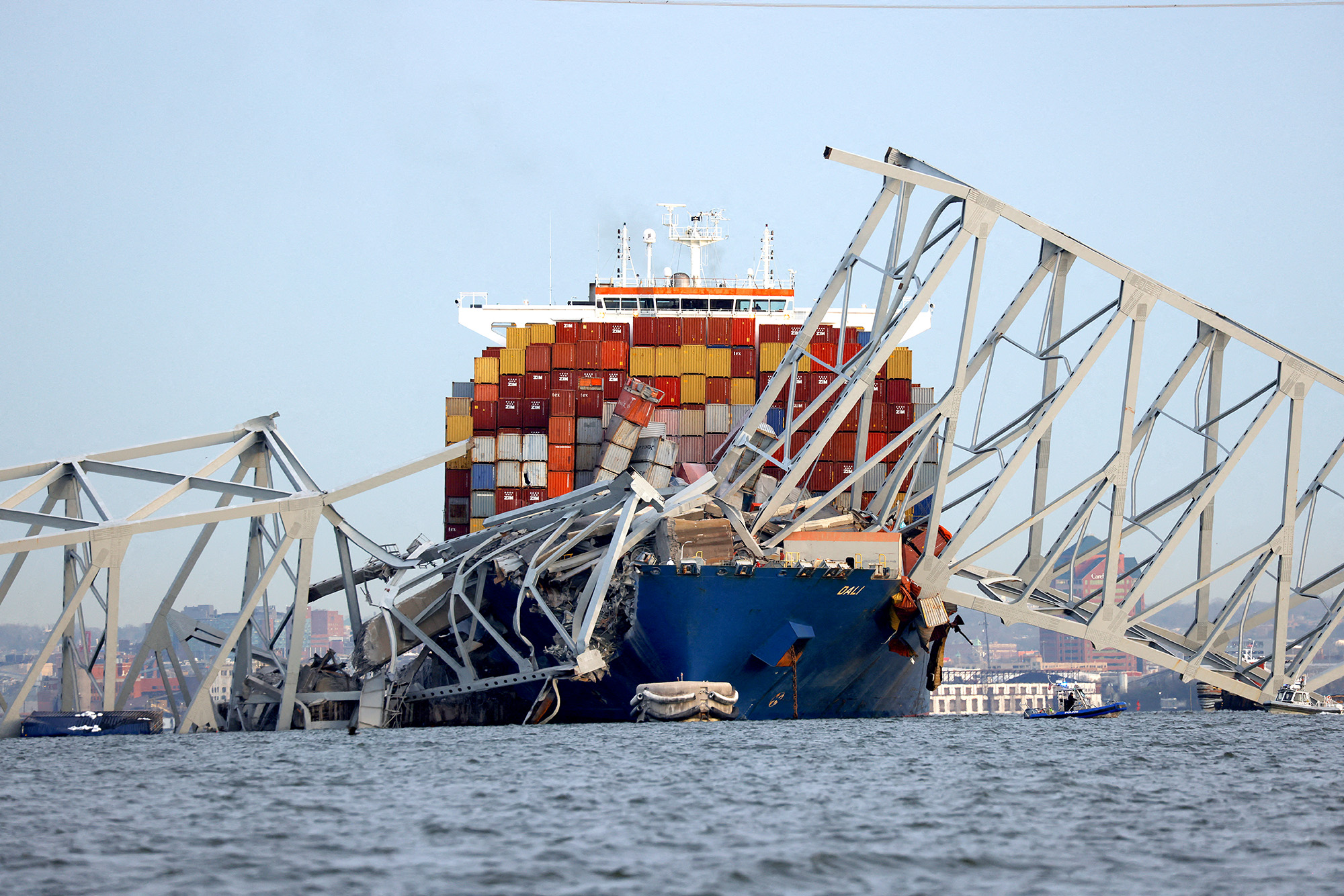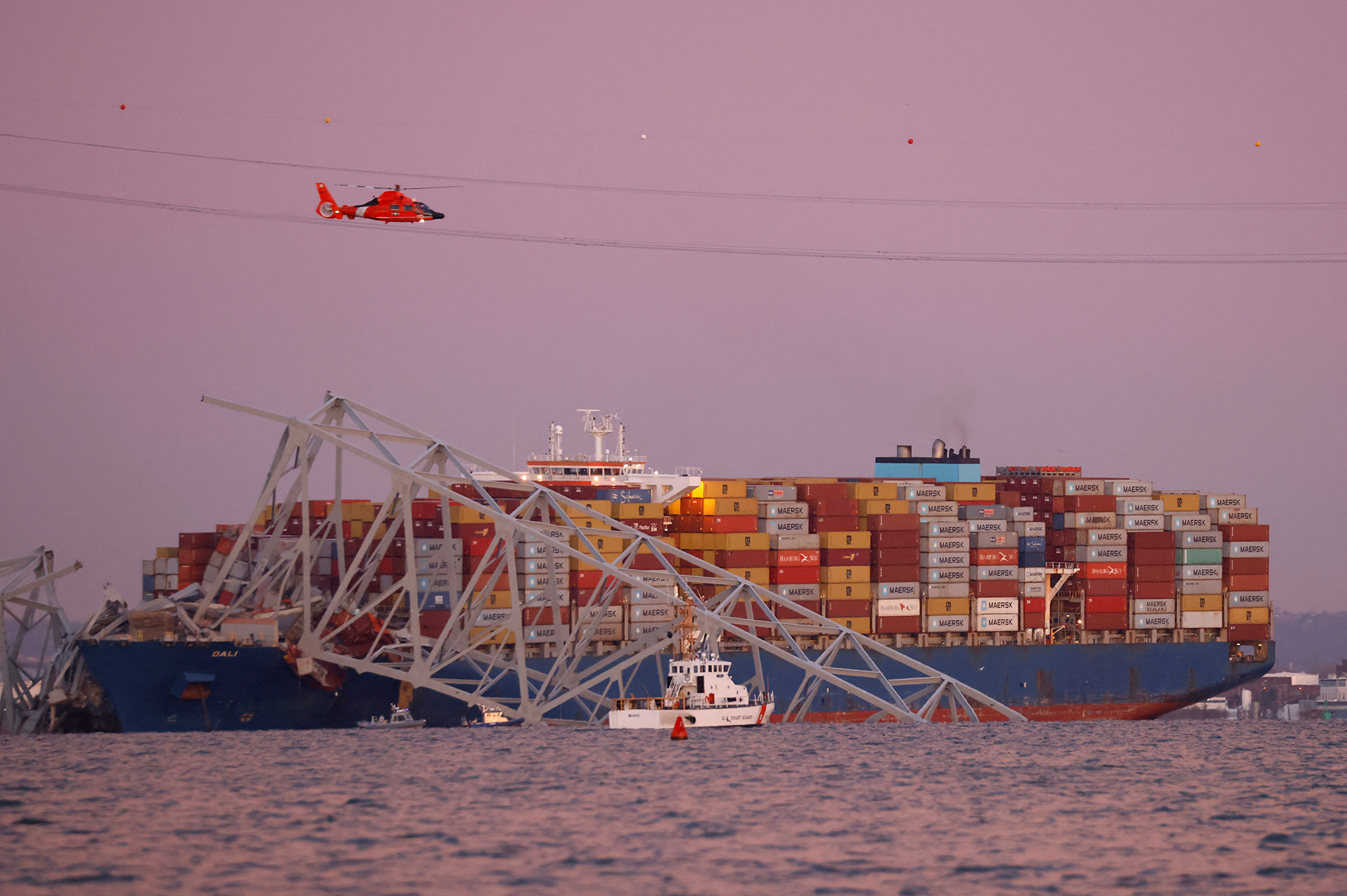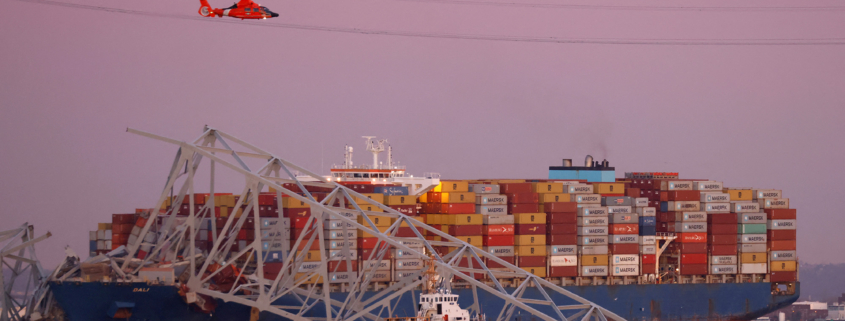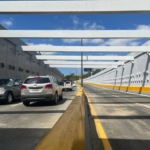Baltimore Key Bridge collapses after ship collision
What we’re covering
Rescue workers in Baltimore are searching for as many as seven people after a major bridge in the city’s port was struck by a container ship early Tuesday, officials said. It is an “active search and rescue” situation, the city’s fire chief said, and the number of missing people could change.
Two people have been saved from the water so far, Baltimore Fire Department Chief James Wallace said.
Video shows the collapse of the 1.6-mile-long, four-lane bridge after it was hit by the vessel. An official told CNN conditions were unsafe for rescuers due to objects hanging from the structure, freezing conditions and limited visibility.
The bridge extends over the Patapsco River and serves as the outermost crossing of the Baltimore harbor. It is an essential link of Interstate-695, or the Baltimore Beltway.
The container ship Dali, which had just left the Port of Baltimore and was en route to Colombo, Sri Lanka, was not being piloted by its own crew, but by local pilots who are used specifically to avoid accidents like the one that occurred early Tuesday morning.
“Pilots move ships in and out of the Port of Baltimore,” said Maryland Transportation Secretary Paul Wiedefeld at a news conference Tuesday.
The pilots get on board just outside of local channels, and take the ships into ports. Outbound ships like this one take the ships from the ports out to open water.
This is true for ships navigating ports, channels and rivers throughout the nation. The idea is that local pilots are aware of hazards in each port, river and channel. It it too early to know the cause of Tuesday’s accident, Wiedefeld said.
The Association of Maryland Pilots is the nation’s oldest state codified organization of pilots, according to its website. While the association goes back to 1852, it says that a reference to bay pilots can be found in Maryland records dating back to 1640, and pilotage laws were established during the first session of Maryland’s legislature in 1787.
One person is being evaluated at the University of Maryland Medical Center following the collapse of the Francis Scott Key Bridge over the Patapsco River in Baltimore, according to hospital officials.
“The R Adams Cowley Shock Trauma Center at the University of Maryland Medical Center received one patient from this incident – they are still in the process of being triaged / evaluated,” according to Michael Schwartzberg, senior director of media relations for the University of Maryland medical system.
No further information on the patient’s condition was released.
Earlier, a Baltimore fire official said two people have been rescued from the river – one who was uninjured and another who was hospitalized in “very serious condition.”
The Dali cargo ship that struck the Francis Scott Key Bridge in Baltimore on Tuesday was involved in an “incident” at the Port of Antwerp in Belgium in 2016, port authorities confirmed to CNN.
The White House is “closely monitoring” the collapse of the Francis Scott Key Bridge in Baltimore, a White House official tells CNN.
The US Coast Guard, the official said, is conducting search and rescue efforts, with senior White House officials in touch with Maryland Gov. Wes Moore and Baltimore Mayor Brandon M. Scott “to offer any federal assistance they need.”
“Our hearts go out to the families of those who remain missing as a result of this horrific incident,” the official said, adding that there is “no indication of any nefarious incident.”
President Joe Biden has been briefed on the bridge collapse, the White House said Tuesday. “He will continue to receive updates from his team throughout the day,” a White House official said.
Biden is currently scheduled to leave the White House at 12:30 p.m. ET for an event in Raleigh, North Carolina.
Baltimore’s Key Bridge collapsed after a ship crashed into it. Here’s what we know so far
From CNN Staff

The Francis Scott Key Bridge in Baltimore collapsed early Tuesday morning after it was struck by a 984-foot cargo ship.
Here’s what we know:
- What happened? Video shows the moment the entire bridge structure falls into the water, as the ship hits one of the bridges pillars. CNN analysis shows that the ships lights flickered and it veered off course before it hit the bridge.
- How many people are missing? Baltimore’s Fire Chief James Wallace said at least two people have been rescued, but they are searching for upwards of at least seven others. The Maryland Transportation Secretary also confirmed there were contractors working on the bridge at the time of its collapse. Officials noted that the number of missing people could change.
- How have authorities responded? Wallace said authorities are carrying out a search and rescue operation using sonar and infrared technologiesas well as drones. He said they have identified vehicles submerged in the water. Maryland Gov. Wes Moore declared a state of emergency following the collapse of the bridge. The Baltimore branch of the FBI is also at the scene, however the Baltimore police chief said there was no indication of terrorism as a motivating factor.
- What was on board the ship? The ship was chartered by Danish shipping company Maerskand was carrying their customers’ cargo, the Danish shipping company told CNN. The company said no Maersk crew or personnel were onboard the vessel. It said the ship, DALI, is operated by charter vessel company Synergy Group.
-
Rescue workers in Baltimore are continuing to search for as many as seven people after a major bridge in the city’s port was struck by a container ship early Tuesday, officials said. It is an “active search and rescue” situation, the city’s fire chief said, and the number of missing people could change.
Water temperatures in Baltimore Harbor near the site of the bridge collapse are currently reported between 46 and 48 degrees Fahrenheit, which is a dangerous temperature for people who are submerged in it and who “aren’t prepared for what the sudden exposure can do to your body and brain,” according to a cold water safety website from the National Weather Service.
Exhausted swimmers without floatation can survive within water temperatures of 40 to 50 degrees Fahrenheit for about 30 to 60 minutes, while the likely survival time with floatation is two to three hours, according to the University of Minnesota.
The search and rescue operations have now entered the sixth hour since this event occurred.
CNN Meteorologist Monica Garrett contributed to this reporting.
The Federal Aviation Administration is restricting aircraft from flying over the wreckage of the Francis Scott Key Bridge in Baltimore.
“Drone pilots: The FAA has flight restrictions in place around the Francis Scott Key Bridge collapse,” the FAA posted to X, formerly known as Twitter. “Do not interfere with rescue operations. If you fly, emergency response operations cannot.”
The restriction established Tuesday morning covers Baltimore Harbor and is close to Baltimore/Washington International Airport (BWI), one of the busiest airports in the region.
No delays were noted at the airport Tuesday morning.
Baltimore Mayor Brandon Scott told CNN, the early morning collapse of the Francis Scott Key Bridge is “an unspeakable tragedy,” he told CNN.
And while there is concern for the status of the bridge, traffic and the port, Scott wants to concentrate on victims that may still be in the water, he said.
“Right now, everyone in this world’s focus should be about these souls and those families who are wondering if these people are going to walk back in the door after they walked out to work last night,” Scott said.
The Baltimore mayor called the ongoing search and rescue mission conducted via sonar, an “all hands on deck effort.”
Ship lights flickered and veered off course shortly before Baltimore bridge hit, CNN analysis shows
From CNN’s Allegra Goodwin in London

The Singaporean-flagged cargo ship that struck the Francis Scott Key Bridge in Baltimore Tuesday altered course and veered toward a pillar shortly before impact, a CNN analysis of MarineTraffic ship-tracking data confirms.
It’s unclear what caused the ship to crash into the bridge or why its lights were flickering. CNN has reached out to the National Transportation Safety Board to inquire about a possible power failure.
The container ship Dali, which was en route to Colombo, Sri Lanka, begins to change course toward the bridge’s pillar at 1:26 a.m. local time, striking the bridge at 1:28 a.m. ET, according to MarineTraffic data and video from the scene. Video from 1: 25 a.m. ET shows a plume of dark smoke billowing from the ship. Dali’s lights flicker at least twice before the incident.
In video, as it navigates down the Patapsco River, the ship’s lights can be seen going out at 1:24 a.m. ET, before turning back on, and then flickering off and on again between 1:26 a.m. ET and 1.27 a.m. ET, just before it hits the bridge.
Maryland State Transportation Secretary Paul Wiedefeld told reporters there were workers on the Francis Scott Key Bridge at the time of its collapse.
“We know there were individuals on the bridge at the time of the collapse, working on the bridge, contractors for us,” he said at a news conference Tuesday morning.
Wiedefeld said the workers were “basically doing some concrete deck repair,” but said they did not know how many vehicles were involved.
He added that the transport authority has set up a facility for family members of those who were believed to be on the bridge at the time of its collapse.
Baltimore fire chief: Sonar has detected the presence of vehicles submerged in the water
From CNN’s Antoinette Radford

Baltimore Fire Chief James Wallace says authorities have detected vehicles submerged in the water.
“Our sonar has detected the presence of vehicles submerged in the water,” said Wallace at a news conference on the collapse of Francis Scott Key Bridge. “I don’t have a count of that yet.”
He said emergency services are using sonar, drones and infrared technology as a part of their search for people and vehicles who may have fallen from the Key Bridge into the Patapsco River.
Baltimore Police said there was no evidence that the ship collision that caused the collapse of the Francis Scott Key Bridge was intentional.
“There is absolutely no indication that there’s any terrorism, that this was done on purpose,” Chief Richard Worley said at a news conference.
The FBI said that it was joining the investigation into the cause of the collision.
Rescue crews have determined there are vehicles in the Patapsco River following the bridge collapse.
“Our sonar has detected the presence of vehicles submerged in the water,” said Fire Chief James Wallace. “I don’t have a count of that yet.”
Wallace said they are waiting to make sure that the ship is secure and stable before investigators board it.
“Never would you think that you would see, physically see, the Key Bridge tumble down like that,” Mayor Brandon M. Scott said.




Dejar un comentario
¿Quieres unirte a la conversación?Siéntete libre de contribuir!